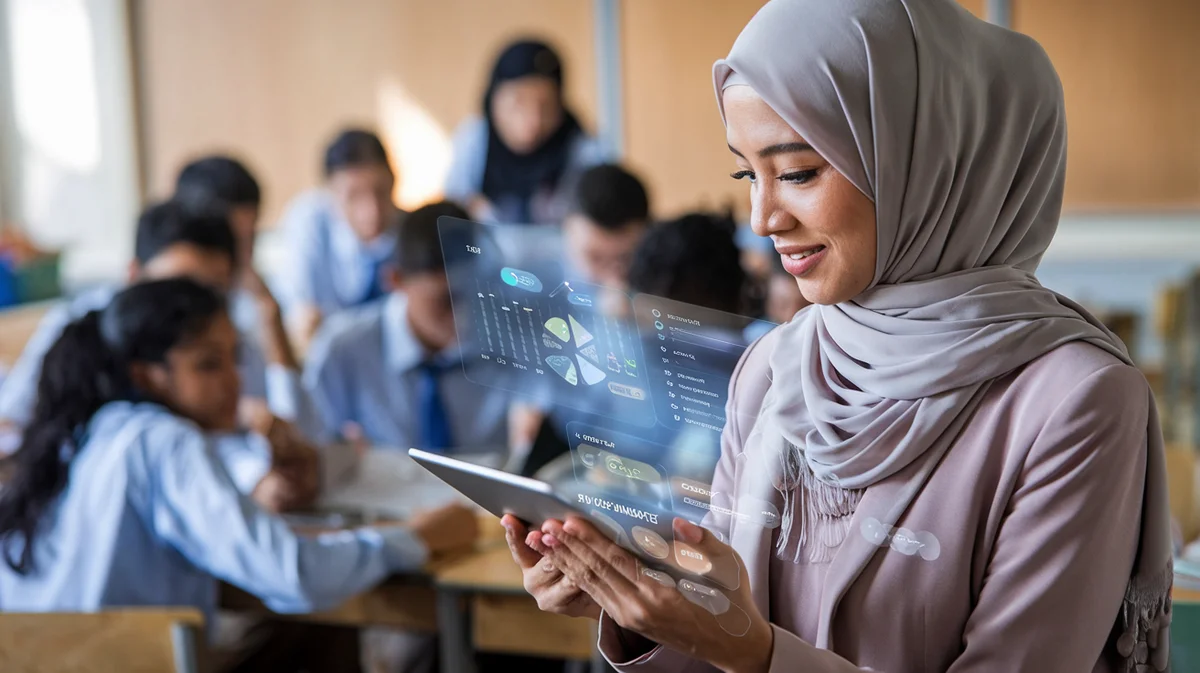Poland AI Education: Pioneering AI-Driven Learning Pilots


wp:paragraph
Poland is rapidly emerging as a leader in AI-driven education, piloting transformative projects that are reshaping how students, educators, and institutions engage with technology. At UNOWA, we are inspired by these advancements and committed to empowering educational communities with innovative, inclusive, and scalable solutions. Here, we explore Poland’s pilot projects in AI-driven learning, highlighting key facts, strategies, and the future of education in the digital age.
/wp:paragraph
wp:heading {"level":2}
Poland’s Vision: AI at the Heart of Education
/wp:heading
wp:paragraph
Poland’s approach to AI in education is both ambitious and pragmatic. The government’s National Digital Education Strategy aligns with the European Commission’s vision to make the EU a global leader in artificial intelligence. This strategy is not just about technology — it’s about creating equitable, future-ready learning environments for all.
/wp:paragraph
wp:heading {"level":3}
Key National Initiatives
/wp:heading
wp:list
- PLLuM and HIVE Projects: The Ministry of Digital Affairs is piloting PLLuM, a suite of 18 Polish AI models — including chatbots and administrative assistants — designed for use in public administration and education. The HIVE consortium, led by Dr. Agnieszka Karlińska, is scaling these efforts, leveraging partnerships with the Central IT Center and Cyfronet AGH for supercomputing resources.
- AI Lab Initiative: In collaboration with Intel, Google, and CCT Poland, a model AI Lab was established to showcase the transformative impact of AI in classrooms. Early results demonstrate improved digital skills and innovative teaching methods.
- Academy for Innovative Applications of Digital Technologies (AI Tech): This project, in partnership with leading universities, is building AI literacy and digital competencies among students and teachers.
- Laboratories of the Future: Nearly all primary schools (99%) are now equipped with STEAM tools — 3D printers, VR goggles, and robots — ensuring hands-on experience with cutting-edge technology.
/wp:list
wp:heading {"level":2}
Infrastructure and Scale: Building the Foundation
/wp:heading
wp:paragraph
Poland’s commitment to digital transformation is evident in its large-scale hardware distribution and infrastructure investments:
/wp:paragraph
wp:list
- By Q3 2025, 735,000 laptops will be supplied to students and 465,000 to teachers.
- 100,000 classrooms in vocational and general education institutions will be equipped for remote teaching.
- The AI Factory (AIF Piast) in Poznań is one of the EU’s first “AI factories,” providing advanced computing resources for AI model development as part of the European Commission’s AI Continent Action Plan.
/wp:list
wp:paragraph
These efforts ensure that AI-driven learning is not limited to a few pilot schools but is accessible across the country, including rural and underserved areas.
/wp:paragraph
wp:heading {"level":2}
Unique Insights from Poland’s AI Pilots
/wp:heading
wp:heading {"level":3}
Mixture of Experts (MoE) Architecture
/wp:heading
wp:paragraph
A standout feature of Poland’s AI models is the use of Mixture of Experts (MoE) architecture. This allows for efficient deployment even in smaller government offices and schools by optimizing the number of active parameters, reducing resource consumption, and making AI accessible beyond major urban centers.
/wp:paragraph
wp:heading {"level":3}
Integration with Public Services
/wp:heading
wp:paragraph
AI-powered assistants are being developed for the mObywatel mobile application, enabling citizens to interact with government services more efficiently. This seamless integration of AI into public administration demonstrates the potential for cross-sectoral impact.
/wp:paragraph
wp:heading {"level":3}
STEAM and Hands-On Learning
/wp:heading
wp:paragraph
The “Laboratories of the Future” program ensures that students are not just passive recipients of technology but active creators and problem-solvers. By providing access to 3D printers, VR, and robotics, Poland is preparing a generation that is ready for the demands of the digital economy.
/wp:paragraph
wp:heading {"level":2}
Policy, Regulation, and International Alignment
/wp:heading
wp:paragraph
Poland’s AI-driven education pilots are closely aligned with EU policy and international best practices:
/wp:paragraph
wp:list
- European Commission’s AI Continent Action Plan: Poland is a key participant, with the EU investing €200 billion in AI development, infrastructure, and education. The plan includes the establishment of AI factories and gigafactories, with Poland playing a leading role during its EU Council presidency.
- Cloud and AI Development Act: Upcoming legislation will expand cloud and data center capacity, crucial for AI-driven education and research.
- National Digital Education Strategy: This comprehensive strategy includes hardware distribution, classroom modernization, and teacher training to ensure readiness for AI integration.
/wp:list
wp:paragraph
For more on EU AI policy, visit the European Commission’s AI page.
/wp:paragraph
wp:heading {"level":2}
Expert Perspectives
/wp:heading
wp:quote
“One of the biggest challenges was training these AI models with expert input.” — Dr. Agnieszka Karlińska, HIVE Consortium Lead, AI Security Research Center at NASK
/wp:quote
wp:quote
“The availability of lightweight AI models allows for deployment even in smaller government offices.” — Dr. Agnieszka Karlińska
/wp:quote
wp:paragraph
These insights underscore the importance of collaboration, expertise, and adaptability in scaling AI-driven learning.
/wp:paragraph
wp:heading {"level":2}
Recent Developments and News
/wp:heading
wp:list
- In March 2025, the Ministry of Digital Affairs introduced the PLLuM models and a freely available chatbot for public use.
- The European Commission’s AI Continent Action Plan, finalized during Poland’s EU Council presidency in April 2025, cements Poland’s leadership in AI infrastructure and policy.
- The European Institute of Innovation and Technology (EIT) is piloting a high-potential start-up initiative in Poland, with plans to invest €30 million by 2028.
/wp:list
wp:paragraph
Stay updated with the latest on Poland’s digital transformation at Gov.pl.
/wp:paragraph
wp:heading {"level":2}
Challenges and Opportunities
/wp:heading
wp:heading {"level":3}
Challenges
/wp:heading
wp:list
- Training AI Models: Ensuring expert input and high-quality data.
- Equitable Access: Bridging the digital divide for rural and underserved communities.
- Curriculum Integration: Adapting existing curricula to leverage AI tools effectively.
/wp:list
wp:heading {"level":3}
Opportunities
/wp:heading
wp:list
- Enhanced Digital Literacy: Empowering students and teachers with future-ready skills.
- Efficiency in Administration: Streamlining public services through AI-powered solutions.
- Workforce Readiness: Preparing students for the demands of a digital economy through hands-on STEAM education.
/wp:list
wp:paragraph
For more insights on digital education strategies, see OECD’s work on AI in education.
/wp:paragraph
wp:heading {"level":2}
UNOWA’s Commitment: Empowering Institutions, Educators, and Students
/wp:heading
wp:paragraph
At UNOWA, we are inspired by Poland’s bold vision and practical strategies. Our mission is to deliver complete educational systems — from inclusive education and STEM innovation to curriculum-aligned content, training, and analytics — adaptable to national standards and ready for large-scale impact.
/wp:paragraph
wp:paragraph
We believe that every child deserves access to quality education, regardless of their abilities. Our solutions are designed to be inclusive, future-ready, and scalable, supporting ministries, institutions, and educators across Europe, MENA, and CIS regions.
/wp:paragraph
wp:paragraph
With over 15 years of experience and a track record of delivering over 300 national projects, we are your trusted partner in educational transformation. Let’s work together to create a brighter, more inclusive future for all learners.
/wp:paragraph
wp:paragraph
Learn more about our work at UNOWA.
/wp:paragraph
wp:heading {"level":2}
FAQ: Poland AI Education and AI-Driven Learning
/wp:heading
wp:paragraph
What are the main AI-driven learning pilots in Poland? Poland’s key pilots include the PLLuM and HIVE projects (AI models for public administration and education), the AI Lab Initiative (with Intel, Google, and CCT), the AI Tech Academy, and the Laboratories of the Future program.
/wp:paragraph
wp:paragraph
How is Poland ensuring equitable access to AI-driven education? Through large-scale hardware distribution (laptops for students and teachers), classroom modernization, and targeted teacher training, Poland is bridging the digital divide and ensuring access across urban and rural areas.
/wp:paragraph
wp:paragraph
What role does the EU play in Poland’s AI education strategy? Poland’s initiatives are closely aligned with the European Commission’s AI Continent Action Plan, which provides funding, infrastructure, and policy support for AI development and education.
/wp:paragraph
wp:paragraph
What challenges does Poland face in implementing AI-driven learning? Key challenges include training AI models with expert input, integrating AI tools into existing curricula, and ensuring equitable access to technology.
/wp:paragraph
wp:paragraph
How can other countries learn from Poland’s experience? Poland’s comprehensive approach — combining infrastructure, policy, and hands-on educational initiatives — offers scalable models and strategies that can inform broader European and global efforts.
/wp:paragraph
wp:paragraph
For further reading, explore EdTech Poland Foundation and EIT Digital.
/wp:paragraph
wp:paragraph
Empowering educators to create a brighter future for all students is at the heart of what we do. Join us in transforming learning experiences for the better.
/wp:paragraph








